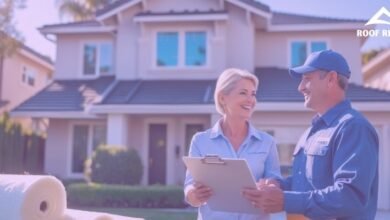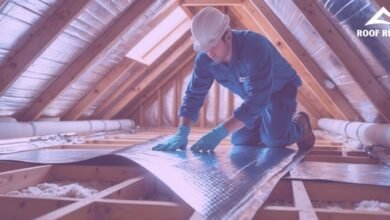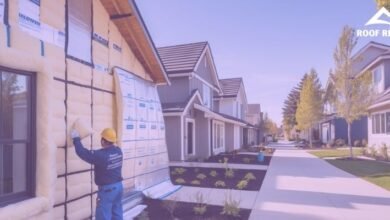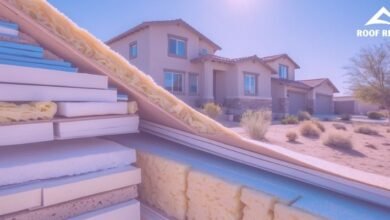How Long Do Metal Roofs Last: A Comprehensive Guide to Durability and Lifespan
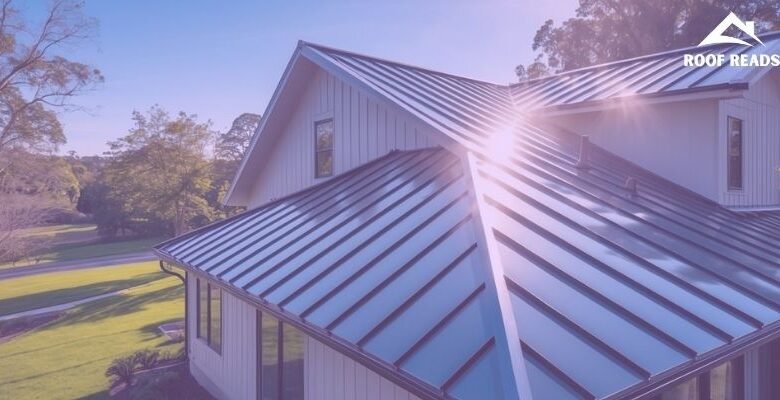
When homeowners think about roof replacement, one of the main questions is how long the new roof will last. Metal roofs have become increasingly popular due to their durability and modern appeal. Unlike traditional asphalt shingles that might need replacement after 15-20 years, metal roofs offer a much longer service life.
Metal roofs typically last between 40 and 70 years depending on the specific metal type, quality of installation, and environmental conditions. Standing seam metal roofs can last 50-75 years, while screw-down panel options typically provide 20-30 years of service. This impressive longevity makes metal roofing an excellent long-term investment for homeowners looking to avoid frequent roof replacements.
The durability of metal roofs represents a significant advantage over conventional roofing materials. Steel, aluminum, copper, and zinc options each offer different lifespans and benefits. While the initial cost may be higher than asphalt shingles, the extended lifespan and minimal maintenance requirements often result in better long-term value for property owners.
Key Takeaways
- Metal roofs last 40-70 years compared to asphalt shingles’ 15-20 year lifespan, offering superior longevity and value.
- Different metal types provide varying lifespans with standing seam designs lasting up to 75 years with proper installation.
- Regular maintenance and quality installation significantly extend a metal roof’s performance and durability against environmental factors.
Average Lifespan of Metal Roofs

Metal roofs stand out in the roofing industry for their exceptional longevity. Most homeowners can expect their metal roofing to last decades longer than traditional roofing materials, making them a smart long-term investment.
Typical Life Expectancy
Most metal roofs last between 40 and 70 years with proper installation and maintenance. Standing seam metal roofs offer the best durability, lasting up to 75 years in many cases. Screw-down panel systems typically have shorter lifespans of 20-30 years due to their different installation method.
Premium metal options like copper and zinc can exceed 100 years of service life in optimal conditions. Standard steel roofing typically lasts 40-60 years when properly galvanized or coated.
Several factors affect metal roof longevity:
- Installation quality: Professional installation ensures maximum lifespan
- Climate conditions: Extreme weather can impact durability
- Ventilation: Proper airflow prevents premature aging
- Maintenance: Regular inspections extend lifespan
Comparing Metal Roofs to Other Roofing Materials
Metal roofing significantly outperforms most alternative roofing materials in longevity:
| Roofing Material | Average Lifespan |
|---|---|
| Metal Roofing | 40-70+ years |
| Asphalt Shingles | 15-30 years |
| Wood Shakes | 15-30 years |
| Clay Tiles | 50+ years |
Asphalt shingles, the most common roofing material, typically need replacement after just 15-30 years. They often show signs of deterioration much earlier, especially in harsh climates.
Wood shakes and shingles offer similar lifespans to asphalt but require significantly more maintenance. They’re also vulnerable to moisture damage, rot, and pests.
While clay tiles can match metal’s longevity, they weigh more and cost more to install. Metal provides similar durability with less structural reinforcement needed.
Key Factors Affecting Metal Roof Longevity

Several important factors determine how long your metal roof will last. The type of metal used and the quality of installation stand out as the most critical elements affecting durability and performance.
Types of Metal Roofing and Their Lifespans
Different metal roofing materials offer varying lifespans based on their inherent properties:
Standing seam metal roofs generally outlast screw-down panel systems by 20-45 years due to their superior design that allows for thermal movement.
Installation Quality and Professional Installation
Even the highest quality metal roofing materials will fail prematurely if poorly installed. Professional installation is crucial for maximizing lifespan.
Key installation factors include:
- Proper fastening techniques: Correctly secured panels prevent wind uplift and water infiltration
- Appropriate underlayment: Acts as a secondary moisture barrier
- Correct flashing installation: Essential for preventing leaks around roof penetrations
- Adequate ventilation: Reduces condensation and prevents premature deterioration
Professional roofers understand metal-specific requirements like expansion and contraction allowances. DIY installations often lead to improper sealing or fastening that significantly reduces roof longevity.
Well-installed metal roofs require minimal maintenance compared to other roofing materials, which further enhances their long-term value.
Maintenance and Its Impact on Performance

Proper maintenance significantly extends the life of metal roofs while neglect can shorten even the most durable system’s lifespan. Regular care ensures metal roofs reach their full 40-70 year potential.
Essential Maintenance Practices
Regular inspections should be conducted at least twice yearly—typically in spring and fall. After severe storms, additional checks help catch potential issues early.
Clearing debris from valleys, gutters, and drainage systems prevents water pooling that can lead to corrosion. Leaves, branches, and dirt accumulation can trap moisture against metal surfaces.
Cleaning the roof surface with gentle soap and water removes dirt and pollutants that might damage protective finishes. Avoid pressure washing, which can damage seams and coatings.
Checking fasteners and seams ensures everything remains tight and sealed. Loose screws or separated seams create entry points for water and should be addressed promptly.
Addressing scratches in the protective coating prevents rust formation. Touch-up paint matching the roof color protects exposed metal.
Low Maintenance Requirements
Metal roofs require significantly less upkeep than traditional roofing materials. Unlike asphalt shingles that may need replacement every 20 years, metal roofs rarely need major interventions.
Snow and ice typically slide off metal roofs without assistance, reducing winter maintenance concerns. The smooth surface prevents ice dam formation that commonly damages other roof types.
Most metal roofing finishes are designed to resist fading, chalking, and corrosion for decades. High-quality coatings can maintain their appearance for 25-30 years before recoating might be needed.
Leak prevention is simpler with metal roofing systems. The interlocking panels and proper installation minimize potential water entry points, reducing the need for frequent repairs.
The cost savings from reduced maintenance needs offset the higher initial installation expense over the roof’s lifetime.
Environmental and Physical Influences

Metal roofs face various challenges from their surroundings that can affect their longevity. The durability of metal roofing depends on how well it withstands weather elements, resists corrosion, and handles physical impacts.
Weather Conditions and Environmental Factors
Metal roofs are designed to withstand harsh weather conditions, but their performance varies by environment. In areas with heavy snowfall, most metal roofs excel because snow slides off easily, preventing weight buildup that can damage other roofing materials.
Extreme heat doesn’t typically damage quality metal roofs, as they reflect sunlight rather than absorb it. This reflective property can reduce cooling costs by up to 25%.
Coastal areas present unique challenges due to salt spray. In these regions, aluminum roofing often performs better than steel because it naturally resists salt corrosion.
High winds rarely damage properly installed metal roofs. Most quality metal roofing systems can withstand winds up to 140 mph, making them ideal for hurricane-prone areas.
UV exposure can gradually fade some metal roof finishes over time, particularly lower-quality paint systems.
Corrosion and Corrosion Resistance
Different metal roofing materials offer varying levels of corrosion resistance. Galvanized steel roofs have a zinc coating that protects against rust but may eventually wear down after 20-30 years in harsh environments.
Galvalume steel (coated with aluminum-zinc alloy) provides superior corrosion resistance compared to standard galvanized steel, often lasting 40-60 years before showing signs of deterioration.
Aluminum roofing naturally resists corrosion and doesn’t rust, making it ideal for coastal areas. It typically maintains its integrity for 35-50 years even in salt-heavy environments.
Copper and zinc roofs develop a protective patina over time. This natural layer actually strengthens the material’s corrosion resistance as the roof ages.
Proper installation with appropriate fasteners is crucial. Using the wrong fasteners can create galvanic corrosion where dissimilar metals meet, significantly reducing roof lifespan.
Dents, Noise, and Other Physical Impacts
Metal roofs vary in their resistance to physical damage. Softer metals like copper and aluminum are more prone to denting from hailstones or falling branches than harder steel panels.
Most modern metal roofing includes textured surfaces that help mask minor denting, maintaining aesthetic appeal even after impacts.
Contrary to common belief, properly installed metal roofs aren’t significantly noisier than other roofing types during rain. Solid decking, insulation, and proper attic ventilation minimize noise transfer.
Metal roofing offers excellent safety benefits, including fire resistance. Unlike wood or asphalt shingles, metal roofs won’t ignite from wildfire embers or lightning strikes.
Walking on metal roofs for maintenance can cause damage if done improperly. Always follow manufacturer guidelines for roof access to prevent denting or loosening fasteners.
Long-Term Considerations and Benefits
Metal roofs offer many long-term advantages that make them worth considering for your home. These benefits include energy savings, environmental friendliness, and financial value despite higher upfront costs.
Energy Efficiency and Environmental Impact
Metal roofs can reduce cooling costs by 10-25% because they reflect solar heat instead of absorbing it. This reflective property helps keep homes cooler in summer months without extra air conditioning.
Most metal roofing contains 25-95% recycled content, depending on the material used. When the roof eventually needs replacement, the metal is 100% recyclable, unlike asphalt shingles that often end up in landfills.
Proper ventilation with metal roofing systems improves energy efficiency even further. The design allows for better airflow in the attic space, reducing heat buildup and moisture problems.
Metal roofs also support green energy initiatives. They’re ideal for mounting solar panels without additional reinforcement due to their strength and durability.
Cost of Metal Roofs and Roof Replacement
Metal roofing costs more upfront than traditional materials—typically $8-14 per square foot installed, compared to $4-7 for asphalt shingles. However, this higher initial investment pays off over time.
The long lifespan of 40-70 years means fewer replacements. A homeowner might replace an asphalt roof 2-3 times during the lifetime of one metal roof.
Maintenance costs are minimal. Metal roofs require simple cleaning and occasional inspections rather than frequent repairs.
Insurance savings are another benefit. Many insurance companies offer discounts of 5-35% for homes with metal roofs due to their resistance to fire, wind, and impact damage.
Pros and Cons of Metal Roofs
Pros:
- Exceptional durability with resistance to wind (up to 140 mph)
- Class 4 impact resistance (can withstand hail up to 2 inches)
- Fire resistance that may lower insurance premiums
- Low maintenance requirements
- Modern styles that increase curb appeal
Cons:
- Higher upfront installation cost
- Potential for noise during heavy rain (though proper insulation minimizes this)
- Possible denting from extreme hail or falling branches
- Expansion and contraction with temperature changes
Metal roofs perform exceptionally well in severe weather conditions. Their interlocking panels provide superior protection against wind uplift compared to individual shingles.
Today’s metal roofs come in various styles and colors, breaking the stereotype of the industrial-looking tin roofs of the past.
Frequently Asked Questions
Metal roofs generate many common questions from homeowners considering this durable roofing option. These questions cover everything from basic maintenance to factors affecting lifespan and replacement indicators.
What are the typical maintenance requirements for metal roofing?
Metal roofs require minimal maintenance compared to other roofing materials. Regular inspection twice a year and after major storms helps identify potential issues early.
Cleaning debris from valleys and gutters prevents water backup and potential damage. Washing the roof surface occasionally with mild soap and water removes dirt and prevents discoloration.
Any scratches or minor damage should be touched up with appropriate paint to prevent rust or corrosion, especially in exposed metal areas.
What factors contribute to the lifespan of metal roofs?
Material quality significantly impacts longevity, with premium metals like copper lasting 80-100 years. Coating quality, including paint systems and protective layers, helps resist fading and corrosion.
The roof pitch affects water drainage, with steeper roofs typically lasting longer because they shed water more efficiently. Local climate conditions, especially exposure to salt air, extreme temperatures, or severe weather, can reduce lifespan.
Proper ventilation beneath the roof prevents moisture buildup that could lead to underside corrosion of metal panels.
Can the installation quality affect the longevity of a metal roof?
Installation quality is perhaps the most critical factor in metal roof performance. Improper installation techniques can lead to premature failure even with high-quality materials.
Correct fastener placement and sealing prevent water penetration and wind uplift. Proper underlayment installation provides an additional moisture barrier and helps reduce noise.
Hiring certified metal roofing installers rather than general roofers ensures the specialized techniques required for metal roofing are correctly applied.
How does weather and climate impact the durability of metal roofing?
Coastal environments with salt spray can accelerate corrosion if proper materials aren’t selected. Areas with frequent hail may experience cosmetic denting, though structural integrity usually remains intact.
Extreme temperature fluctuations cause expansion and contraction, making proper installation with movement allowances essential. Heavy snow regions benefit from metal’s slippery surface, but ice dams can still form at eaves.
UV exposure in sunny climates may fade certain paint finishes over time, though high-quality coatings resist this effect for decades.
What are the signs that indicate a metal roof needs replacement?
Widespread rust or corrosion that penetrates through protective coatings signals serious deterioration. Multiple leaks or water stains on interior ceilings suggest failed seams or penetrations.
Loose panels that cannot be properly refastened compromise the roof’s water-shedding ability. Visible structural sagging indicates potential deck failure beneath the metal roofing.
Extensive surface pitting from age or environmental factors may thin the metal to the point where replacement becomes necessary.
How do the lifespans of metal roofs compare to other roofing materials?
Metal roofs typically last 30-50+ years, significantly outlasting asphalt shingles’ 12-20 year average lifespan. This longevity makes metal more cost-effective despite higher initial installation costs.
Clay and concrete tiles offer comparable 50+ year lifespans but weigh considerably more and require stronger structural support. Wood shakes last 15-30 years with regular maintenance but are vulnerable to fire, insects, and rot.
Premium metals like copper and zinc can last 80-100 years, rivaling natural slate as the longest-lasting roofing materials available for residential use.

